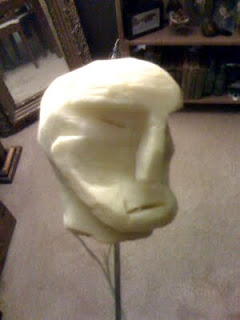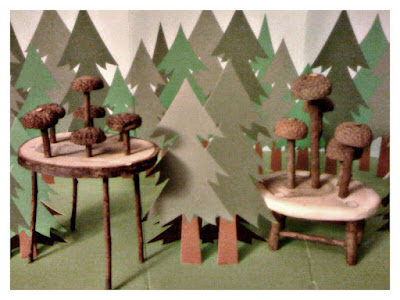The remains of a mighty Persian army said to have drowned in the sands of the western Egyptian desert 2,500 years ago might have been finally located, solving one of archaeology's biggest outstanding mysteries, according to Italian researchers.
Bronze weapons, a silver bracelet, an earring and hundreds of human bones found in the vast desolate wilderness of the Sahara desert have raised hopes of finally finding the lost army of Persian King Cambyses II. The 50,000 warriors were said to be buried by a cataclysmic sandstorm in 525 B.C.
"We have found the first archaeological evidence of a story reported by the Greek historian Herodotus," Dario Del Bufalo, a member of the expedition from the University of Lecce, told Discovery News.
According to Herodotus (484-425 B.C.), Cambyses, the son of Cyrus the Great, sent 50,000 soldiers from Thebes to attack the Oasis of Siwa and destroy the oracle at the Temple of Amun after the priests there refused to legitimize his claim to Egypt.
After walking for seven days in the desert, the army got to an "oasis," which historians believe was El-Kharga. After they left, they were never seen again.
"A wind arose from the south, strong and deadly, bringing with it vast columns of whirling sand, which entirely covered up the troops and caused them wholly to disappear," wrote Herodotus.
A century after Herodotus wrote his account, Alexander the Great made his own pilgrimage to the oracle of Amun, and in 332 B.C. he won the oracle's confirmation that he was the divine son of Zeus, the Greek god equated with Amun.
The tale of Cambyses' lost army, however, faded into antiquity. As no trace of the hapless warriors was ever found, scholars began to dismiss the story as a fanciful tale.
Now, two top Italian archaeologists claim to have found striking evidence that the Persian army was indeed swallowed in a sandstorm. Twin brothers Angelo and Alfredo Castiglioni are already famous for their discovery 20 years ago of the ancient Egyptian "city of gold" Berenike Panchrysos.
Presented recently at the archaeological film festival of Rovereto, the discovery is the result of 13 years of research and five expeditions to the desert.
"It all started in 1996, during an expedition aimed at investigating the presence of iron meteorites near Bahrin, one small oasis not far from Siwa," Alfredo Castiglioni, director of the Eastern Desert Research Center (CeRDO)in Varese, told Discovery News.
While working in the area, the researchers noticed a half-buried pot and some human remains. Then the brothers spotted something really intriguing -- what could have been a natural shelter.
It was a rock about 35 meters (114.8 feet) long, 1.8 meters (5.9 feet) in height and 3 meters (9.8 feet) deep. Such natural formations occur in the desert, but this large rock was the only one in a large area.
"Its size and shape made it the perfect refuge in a sandstorm," Castiglioni said.
Right there, the metal detector of Egyptian geologist Aly Barakat of Cairo University located relics of ancient warfare: a bronze dagger and several arrow tips.
"We are talking of small items, but they are extremely important as they are the first Achaemenid objects, thus dating to Cambyses' time, which have emerged from the desert sands in a location quite close to Siwa," Castiglioni said.
About a quarter mile from the natural shelter, the Castiglioni team found a silver bracelet, an earring and few spheres which were likely part of a necklace.
"An analysis of the earring, based on photographs, indicate that it certainly dates to the Achaemenid period. Both the earring and the spheres appear to be made of silver. Indeed a very similar earring, dating to the fifth century B.C., has been found in a dig in Turkey," Andrea Cagnetti, a leading expert of ancient jewelry, told Discovery News.
In the following years, the Castiglioni brothers studied ancient maps and came to the conclusion that Cambyses' army did not take the widely believed caravan route via the Dakhla Oasis and Farafra Oasis.
"Since the 19th century, many archaeologists and explorers have searched for the lost army along that route. They found nothing. We hypothesized a different itinerary, coming from south. Indeed we found that such a route already existed in the 18th Dynasty," Castiglioni said.
According to Castiglioni, from El Kargha the army took a westerly route to Gilf El Kebir, passing through the Wadi Abd el Melik, then headed north toward Siwa.
"This route had the advantage of taking the enemy aback. Moreover, the army could march undisturbed. On the contrary, since the oasis on the other route were controlled by the Egyptians, the army would have had to fight at each oasis," Castiglioni said.
To test their hypothesis, the Castiglioni brothers did geological surveys along that alternative route. They found desiccated water sources and artificial wells made of hundreds of water pots buried in the sand. Such water sources could have made a march in the desert possible.
"Termoluminescence has dated the pottery to 2,500 years ago, which is in line with Cambyses' time," Castiglioni said.
In their last expedition in 2002, the Castiglioni brothers returned to the location of their initial discovery. Right there, some 100 km (62 miles) south of Siwa, ancient maps had erroneously located the temple of Amun.
The soldiers believed they had reached their destination, but instead they found the khamsin -- the hot, strong, unpredictable southeasterly wind that blows from the Sahara desert over Egypt.
"Some soldiers found refuge under that natural shelter, other dispersed in various directions. Some might have reached the lake of Sitra, thus surviving," Castiglioni said.
At the end of their expedition, the team decided to investigate Bedouin stories about thousands of white bones that would have emerged decades ago during particular wind conditions in a nearby area.
Indeed, they found a mass grave with hundreds of bleached bones and skulls.
"We learned that the remains had been exposed by tomb robbers and that a beautiful sword which was found among the bones was sold to American tourists," Castiglioni said.
Among the bones, a number of Persian arrow heads and a horse bit, identical to one appearing in a depiction of an ancient Persian horse, emerged.
"In the desolate wilderness of the desert, we have found the most precise location where the tragedy occurred," Del Bufalo said.
The team communicated their finding to the Geological Survey of Egypt and gave the recovered objects to the Egyptian authorities.
"We never heard back. I'm sure that the lost army is buried somewhere around the area we surveyed, perhaps under five meters (16.4 feet) of sand."
Piero Pruneti, editor of Archeologia Viva, Italy's most important archaeology magazine, is impressed by the team's work.
"Judging from their documentary, their hypothesis of an alternative route is very plausible," Prunetic told Discovery News. "Indeed, the Castiglioni's expeditions are all based on a careful study of the landscape...An in-depth exploration of the area is certainly needed!"
From the source.




































